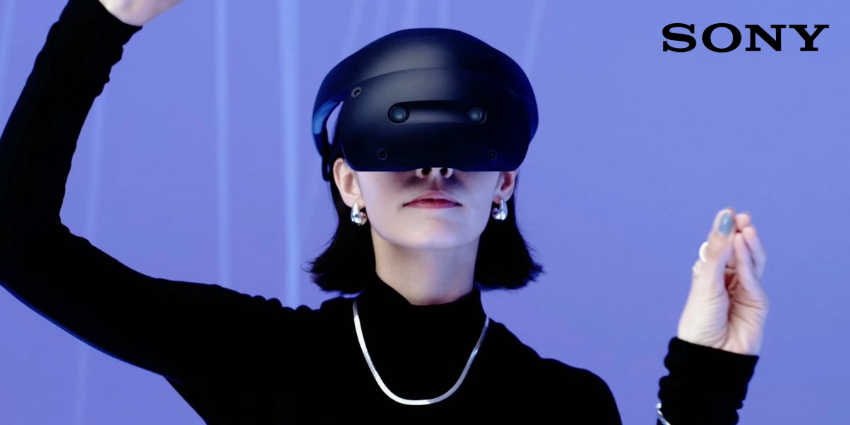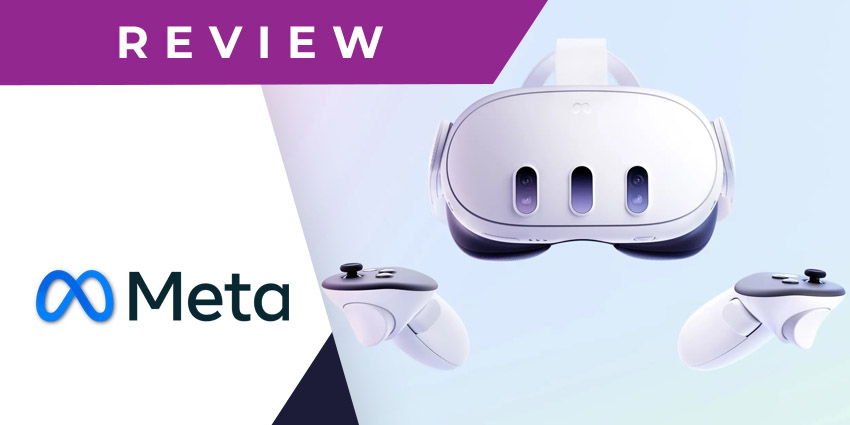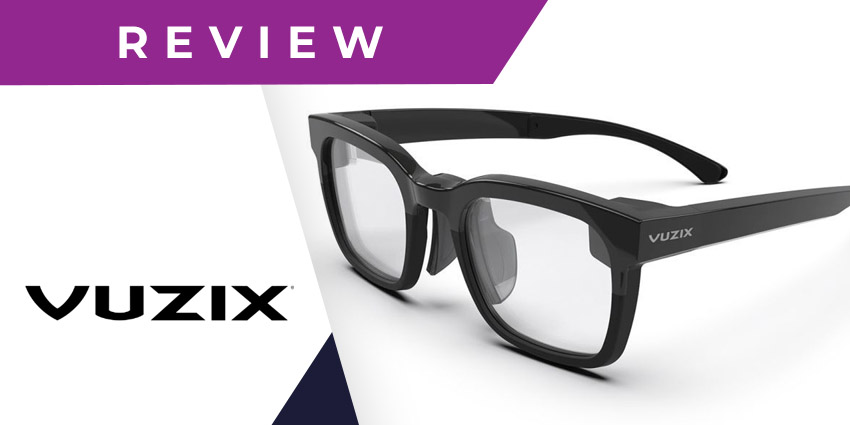Viture, an innovator in the XR smart glasses market, recently launched its latest specs: the Viture Pro glasses. Building on the success of its previous Viture One glasses, unveiled at CES 2023, these specs promise to revolutionize the immersive eyewear space.
While the Viture Pro might not be a full spatial computing headset, like the Apple Vision Pro, I think they represent a significant step forward in the smart glasses space. Not only are the displays incredible (more on that later), but the Pro glasses are lightweight, comfortable, and brimming with useful features, thanks to the addition of SpaceWalker software.
In this review, I’ll share everything you need to know about these glasses.
The Quick Viture Pro Verdict
The Viture Pro XR specs are certainly a step forward from Viture’s previous headset, boasting a truly impressive and adjustable display, edge-to-edge clarity, and phenomenal comfort. They might not be as world-changing as something like the Apple Vision Pro, but the Viture Pro specs are an affordable way to step into the future of augmented glasses.
Pros:
- Stunning visuals with enhanced brightness and clarity
- Lightweight, comfortable (and even stylish) design
- Native 3D video support
- Effective electrochromic film
- Brilliant built-in software
Cons:
- A little pricey compared to some smart glasses
- The spatial sound is a little quiet
- Some limitations on viewing angles
Viture Pro Review: The Specs
As I mentioned, the Viture Pro glasses are an upgraded version of Viture’s previous “One” glasses, with a host of new features and design improvements. Compared to the Viture One specs, the Pro glasses have a 10% larger display, double the refresh rate and 4000 nits of brightness.
Plus, Viture even partnered with Harman on spatial sound features, although I found the sound to be a little lacking in some areas (like volume). Here’s what you can expect specs-wise:
| Display | Sony Micro-OLED screens with 1080p resolution and 4000 nits of brightness |
| Refresh rate | Up to 120 FPS |
| Virtual screen | Up to 135 inch 49 PPD virtual screen |
| 3D Support | Native 3D video (3840 x 1080) |
| Weight | 77 grams |
| Audio | Dual speakers for spatial sound |
| Myopia adjustments | Full IPD control |
| Brightness control | Tint-changing electrochromic film |
Pricing: How Much Does the Viture Pro Cost?
When it launched the Viture Pro glasses, the company noted that it would be giving customers “Apple Vision Pro” experiences at a fraction of the price. However, that is a bit of a lofty claim. After all, you don’t actually get the full “spatial computing” experience with these glasses.
There’s no option for actually interacting with digital content through gestures and eye movements. You’ll need to use your smartphone or computer to manage everything.
With that in mind, I can’t really compare the Viture Pro to the Apple Vision Pro from a pricing perspective. If you look at them just as another pair of (albeit impressive) smart glasses, the price is pretty high at around $549. Plus, that price starts to increase if you want to customize your experience with extra accessories.
The Design: Stylish Smart Glasses (Finally)
It’s not easy to build a pair of XR smart glasses that combine excellent functionality with style and comfort, but Viture is on the right track. While these specs might not be as impressive visually as Meta’s Ray-Ban smart glasses, they’re pretty sleek.
The Viture Pro XR glasses are similar in style to the Viture One, with a few basic stylistic changes, like the addition of a metallic orange logo on the upper right of the frame. The design layout is also similar, with the same brightness rocker and lens dimming button on the left temple and a USB cable connector on the right.
I did like the fact that the cable magnetically attaches to your glasses, so you’re less likely to accidentally yank them off your face when you catch the wire with your arm. Obviously, this wire is one of the things that will likely let people know you’re wearing smart glasses pretty quickly.
However, the lenses definitely aren’t as thick as some of the other smart glasses I’ve tried, and I like the fact that you can use the lens-dimming button to hide the angled prisms behind the front lenses. You may even be able to convince people you’re wearing regular specs (at a distance).
From a comfort perspective, these glasses are pretty easy to wear for long periods of time, with their lightweight structure. I was also pretty impressed by the focus dials on the specs. They allow you to individually adjust focus for each eye. Plus, there are myopia adjustments for up to -.5.00D, so you can still enjoy XR if you usually wear prescription lenses.
Viture Pro Review: Display and Audio
The Virtue Pro glasses have an incredible display. The Sony Micro-OLED tech gives you an ultra-bright, colorful, and clear display for a truly phenomenal viewing experience. I was a little disappointed by the 46-degree field of view (only 3 degrees larger than Viture One glasses).
Still, the glasses are excellent at producing a phenomenal 135-inch screen with a crisp 1080p resolution that hovers in front of you. The implementation of “UltraClarity” technology even means it’s easy to read small text, and there’s very little blurring around the edges of the screen.
For me, the brightness on the Viture Pro specs definitely sets them apart. Although the screen projects at up to 4000 nits of brightness, you’ll only perceive around 1000 nits. That’s still more than enough for an accurate view of HDR content, however. Color performance is fantastic too, with plenty of vivid balance, and the refresh rate is excellent at 120Hz.
I also love how easy it is to adjust your brightness, turn the electrochromic film on and off, and switch between 2D and 3D modes with a tap of a button.
However, while the Viture Pro shines from a display perspective, the audio is still a bit lacking. The Harman tuning has elevated the spatial audio experience (to a certain extent), but the speakers are still very small and not really capable of producing much volume. Even at max volume, the sound is easily drowned out by anything going around you.
I’d probably recommend using headphones for the best experience. Although, it’s worth noting that you won’t have to rely on headphones too much for privacy. Viture has mastered minimizing audio bleed with Harman, so it’s unlikely people will be able to overhear your conversations.
Connectivity Options and Accessories
Like most of the smart glasses I’ve reviewed, the Viture Pros will connect with virtually any device that offers Display Port over USB-C functionality. This means you can link them to your laptop, gaming systems, android phones, and iPhone.
You can also purchase a few optional accessories alongside your specs. For example, a $129 mobile dock allows the Pro to work with the Nintendo Switch and other 3D video-enabled devices. This dock also gives you an extra eight hours of battery life.
Plus, there’s a $99 HDMI adapter if you’re using an iPhone with a Lightning connector, but you’ll also have to purchase a Lightning to Digital AV adapter. Viture also offers a $199 Android neckband system, which allows the glasses to work (sort of) as a standalone device, so you don’t have to have a cable stretching down to your pocket.
Viture Pro Review: The Software
I mentioned above that the Viture Pro glasses don’t really compete with products like the Apple Vision Pro from a spatial computing perspective. Although that’s true, I do think they offer a slightly more immersive experience than some other smart specs.
The SpaceWalker app (available for Android and MacOS), gives you a lot of freedom over how you interact with content. By default, the Pro displays a screen locked in front of your eyes at a distance of around 9 feet. However, this mode doesn’t use the “3DoF” feature to track your head movement.
If you want something more immersive, you can use the SpaceWalker app to set up multiple virtual screens and customize them. However, the level of control you have varies on where you’re accessing the app. On Android, you can use a dedicated interface for navigating through multiple screens and apps. With a Mac, you’ll just have a bunch of options for different types of virtual monitors, such as an ultra-wide screen or double/triple side-by-side monitors.
The downside is that your content options will be more limited if you’re using Windows or iOS devices. However, you can use an optional XR charging adapter that enables screen locking, spatial video, and 3D video for these devices.
The SpaceWalker App
I thought the SpaceWalker app worked pretty well (on the devices it’s available for); however, I still found myself using the simple static display most of the time. The limited field of view can make other screen settings a little tougher to navigate comfortably, at least in my opinion.
Once you enable the 3DoF tracking capabilities, it’s a little harder to keep your screen in front of your eyes. Plus, since you only get 3 degrees of freedom tracking, you can’t really move closer to, or further away from your virtual screen.
On the positive side, the app is easy to use, and everything only takes a couple of minutes to set up. You might occasionally encounter a couple of bugs, but I found that just unplugging the specs and plugging them back in again fixed most issues.
The Viture Pro XR Glasses: Final Verdict
We’re still a little way off from smart glasses that deliver an experience as immersive as a mixed reality or AR/VR headset. However, specs like the Viture Pro glasses do represent a positive step forward in XR glasses technology. These glasses offer fantastic picture quality and excellent features that I believe are great for both work and play.
If you’re looking for a simple and effective set of smart glasses, the Viture Pro specs are one of the best options out there. They’re a little on the pricey side, but they’re definitely more affordable than some full spatial computing solutions.








